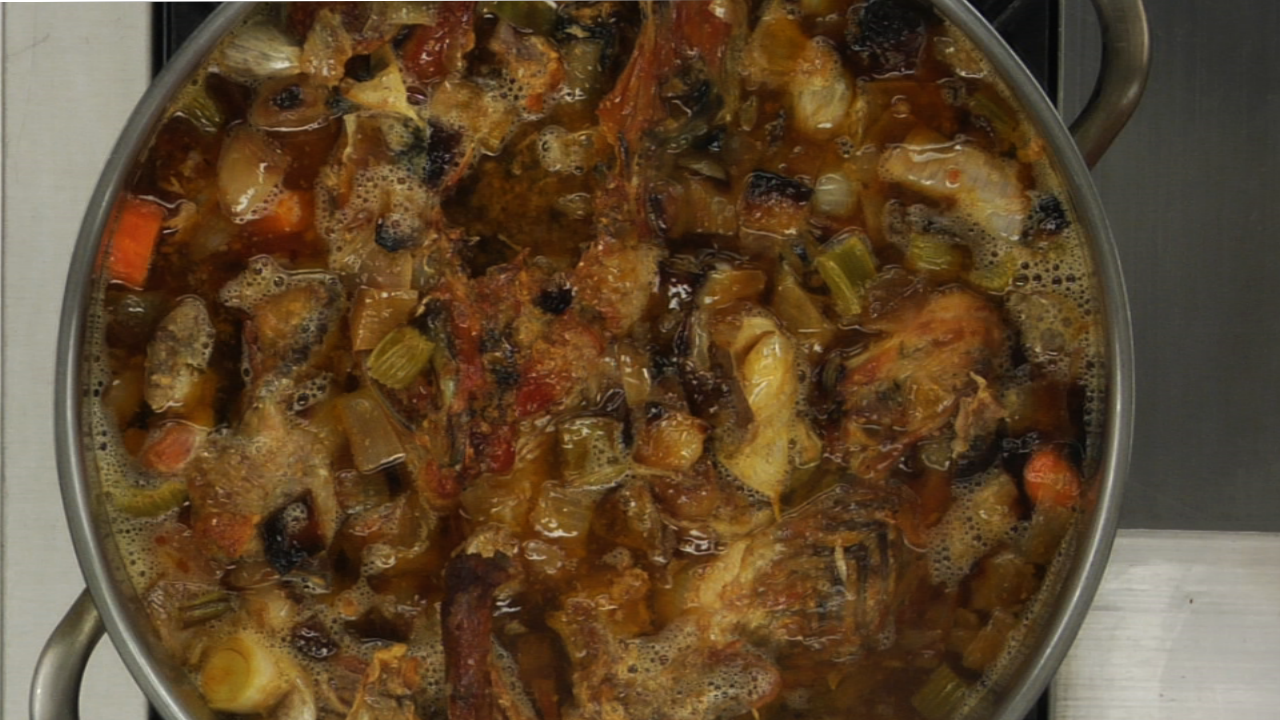Lessons > How to Make Dark Stock
Your culinary journey starts here
Lesson Overview
In the world of fine cooking, dark meat stock is an essential ingredient in the kitchen. Dark stocks basically replicate the same flavors savored from grilled meats, roasted vegetables and caramelized onions, but in a pure liquid form.
This incredibly flavorful liquid allows chefs to inject i…
Click to expand...Lesson Objectives
At the end of this lesson you'll be able to:
- explain the main difference between white and dark stock
- caramelize and deglaze to add color and flavor to stock
- identify what ingredients are used to make dark stock
- make dark chicken stock
- learn how to reduce and concentrate dark chicken stock to a sauce-like consistency
- use dark stock to make amazing restaurant-quality recipes and sauces
Course Syllabus
|
|
START: Watch Lesson Platform Tour | |
| 1. | Introduction: How to Make Dark Stock |
|
| 2. | Complete Your Self Assessment |
|
| 3. | Difference Between White & Dark Stocks |
|
| 4. | Caramelizing Ingredients for Stock |
|
| 5. | Cooking & Finishing Dark Stock |
|
| 6. | Practice Activities & Recipes |
|
| 7. | Lesson Quiz |
|
What People Are Saying
|
|
★★★★★ |
|
|
★★★★ |
|
|
★★★★★ |
|
|
★★★★★ |
|
|
★★★★★ |
|
|
★★★★★ |
|
|
★★★★★ |
|
|
★★★★★ |
|
|
★★★★★ |
|
|
★★★★★ |
|
|
★★★★★ |
|
|
★★★★★ |
|
|
★★★★★ |
| Show More |
20 Videos
|
7 Tasks
Task 1: Introduction: How to Make Dark Stock
Task 2: Complete Your Self Assessment
Task 3: Difference Between White & Dark Stocks
Task 4: Caramelizing Ingredients for Stock
Task 5: Cooking & Finishing Dark Stock
Task 6: Practice Activities & Recipes
Task 7: Lesson Quiz
Your Culinary Journey Starts Here!
Access to traditional and next-gen culinary foundations & techniques
Check out lessons, courses and tips
Trial Rouxbe for free, no credit card needed






